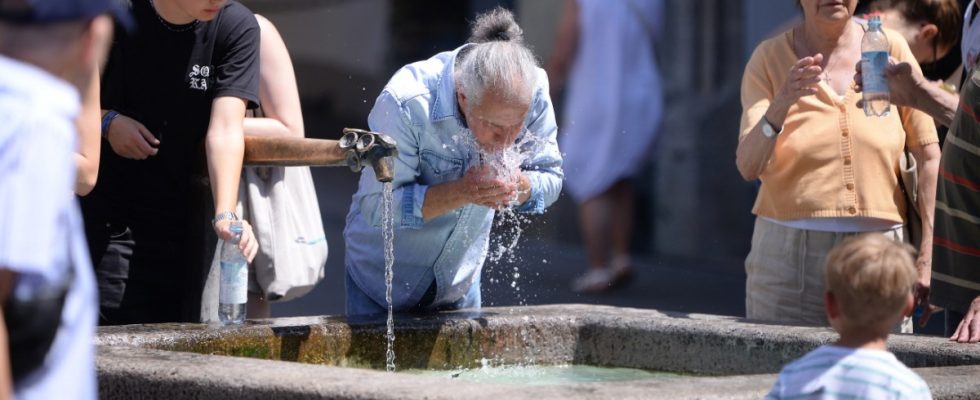The heat is building up in Munich: The more central the location in the city, the more intense the temperatures. There is hardly any cooling, especially where tall buildings and little green meet many people.
And especially where people are already weak – in care facilities and hospitals – there is a risk that the heat will affect them too much. Tim Guderjahn, Commercial Director of the Munich Clinic, reports of “great stress for employees and patients,” for example in the old buildings of the Schwabing Clinic. There they help themselves with heat protection film on the windows, but the old walls are simply less well insulated than the new buildings, which is why they are eagerly awaiting the move to the new building.
Severe heat waves even cost some people their lives: According to the health department, 8,700 deaths in Munich were due to heat waves in 2018, 6,900 in 2019 and “only” about 3,700 in 2020 – but the heat waves are expected to become more frequent in the future.
The health committee of the city council has therefore now decided to better protect older people and patients in care facilities and hospitals from the heat. As far as possible, because the best protection would probably be to lower the temperatures, and unfortunately that is not possible. So the main thing is to provide better and more frequent information, in consultations, on flyers, on internet platforms. A heat action plan for care facilities has been in place since 2020, it is said that it was created together with the LMU Institute for Occupational and Social Medicine. Now there is a heat guide in general for older people, but also for their caring relatives.
Older people are now specifically addressed
What can you do to better protect yourself from the heat? First drink a lot. And the rooms have to be kept as cool as possible. The city’s package of measures is now called “Munich stays cool” and primarily provides for the distribution of heat guides and action plans for care facilities and clinics. So-called vulnerable groups are to be specifically addressed on the subject of heat at counseling appointments in the city’s old people’s and service centers. In the future, it would be conceivable to have extra cool rooms in these service centers, where the elderly could flee. With the help of a climate function map, nursing homes and hospitals that were particularly thermally stressed were analyzed and contacted years ago.
Health officer Beatrix Zurek (SPD) gratefully accepted the suggestion of the left-wing faction to also protect the homeless in the city. Cooling rooms are also conceivable for them, she said.
The city has had a climate adaptation concept since 2016, which the health department is also working on. The heat protection measures should find their way into it. In addition, at the request of the SPD, the concept against heat will be broken down into the individual city districts. Because you gain new experiences year after year on how best to endure it in the overheated city, the measures should be checked regularly.

